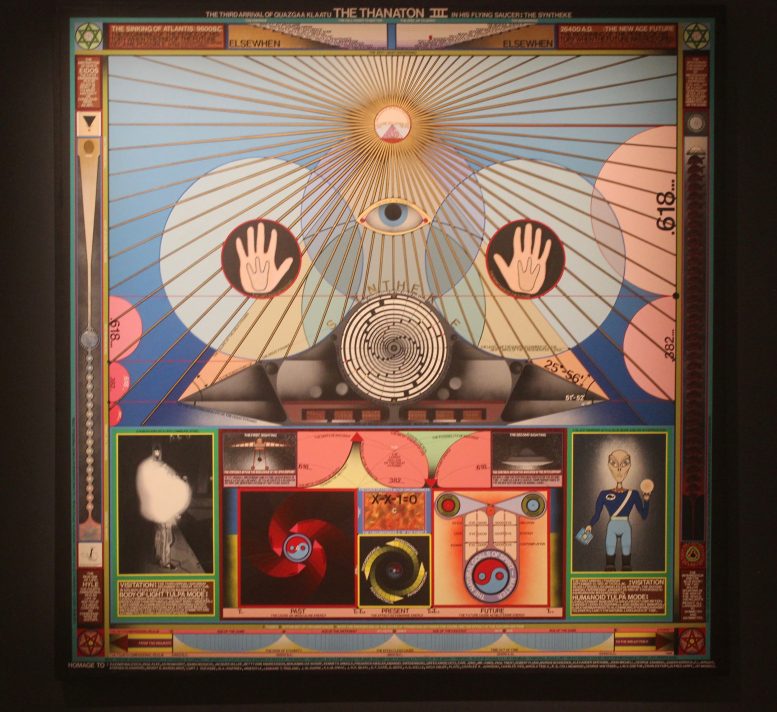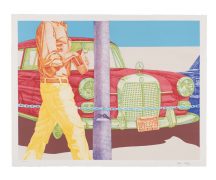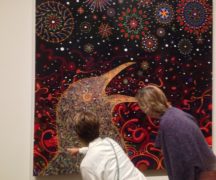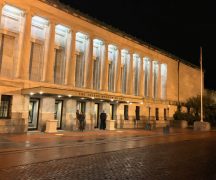By DAVID DUPONT
BG Independent News
America is haunted.
That stands as the central theme of the Toledo Museum of Art’s new major exhibit “Supernatural America: The Paranormal in American Art.”
Curator Lauren Applebaum testified to the truth of that theme before she even started talking about the exhibit. She delivered the land acknowledgement that has more and more become part of public events.
The land that the museum occupies is, she said, “the ancestral homeland of the Erie, Kickapoo, Ottawa and Seneca.” Other indigenous people also used the land.
And their spirits still occupy the place.
They are among those who haunt America.
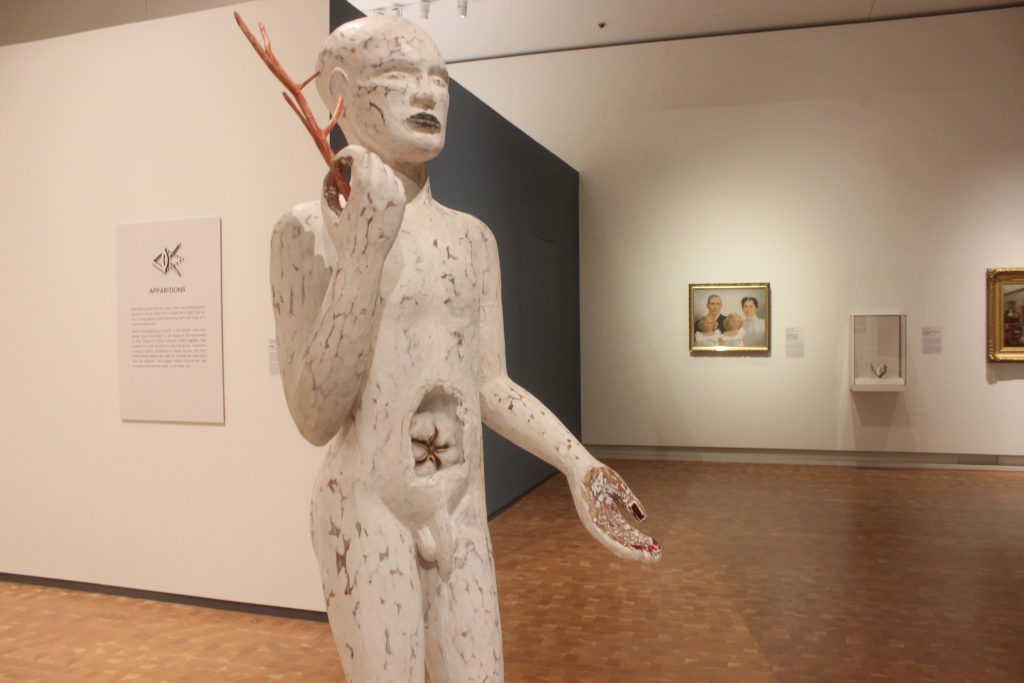
In the exhibit, their presence is acknowledged, as are the spirits of the enslaved Africans who were brought here, and the Europeans and others who migrated here.
Some, such as the Pilgrims came is search of a spiritual home on earth, a bit of heaven, a shining city on a hill. And what are those extraterrestrials some people have encountered seeking?
The sprawling 14,000 square foot exhibit that includes 211 objects covers this and more. It poses more questions than answers, and that makes it all the more intriguing.
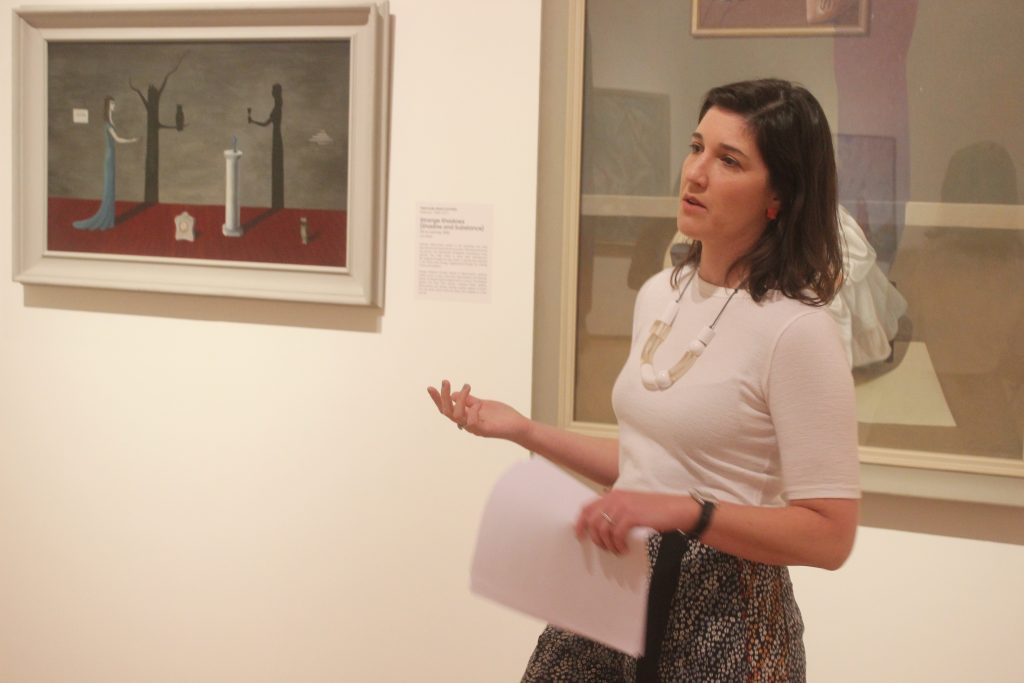
The visitor enters to George McEwen’s ‘The Ghost Story,” where women in 17th century Dutch dress sit rapt with their work put aside as another woman tells them a spooky tale. Across the way is one of the most well-known pieces in the exhibit, “The Trial of George Jacobs, Sr. For Witchcraft” painted by George Matteson in 1855. It depicts a key episode in the Salem Witch Trials, the archetypal trauma of the early colonizers that involved elements that the Puritans brought with them from the Old World heightened by fears they discovered in the New World.
Enslaved people had preceded the Pilgrims to the New World. Alison Saar’s “Cotton Demon,” is a ghostly figure with the cotton plant embedded in its stomach. Just beyond the first gallery is Xicano-Mestizo artist John Jota Leaños’ animation “Destinies Manifest,” which upends the vision of Manifest Destiny by showing what was lost as Europeans swept over the continent.
These specters have continued to enthrall Americans in the intervening centuries.

Yet this is the first museum show to broadly examine the presence of the supernatural in American arts, explained Applebaum. The exhibit was organized by the Minneapolis Institute of Art, where it was to have been exhibited earlier this year. But with the pandemic spooking the country, it was decided that the show’s debut would be in Toledo, where it continues until Sept. 5. It will then move to the Speed Art Museum at the University of Louisville, and finally to Minneapolis.
The exhibit is more than artists confronting the supernatural. Many of the works depict the supernatural experiences of the artists themselves.
While noted artists are represented including Andrew Wyeth with “The Revenant,” inspired by the tragic death of his grandfather and two grandchildren, many of those with work included are obscure.
The art shares space with objects used to see auras or detect ghosts and summon spirits.
Pieces such as Reneé Stout’s “The Rootworker’s Work Table” speak to practices and wisdom dating back beyond history.
Religious traditions are diverse, extending from Cree visionary Chholing Taha to fundamentalist Reverend Howard Finster.
The visions can be dark as in “Wherefore War” where Marian Spore Bush foretells in 1930 the carnage of World War II. Or they can be hopeful as in “New World A’Coming” by Norman Lewis, which foreshadows Afrofuturism.

Several artists struggle to represent their own encounters with UFOs and extraterrestrial beings, trying to reimagine the engineering, the fear, the promise of what they experienced.
This is brilliantly realized in the piece at the end of the exhibit, “The Thanaton III,” based on the visitations experienced by artist Paul Laffoley.
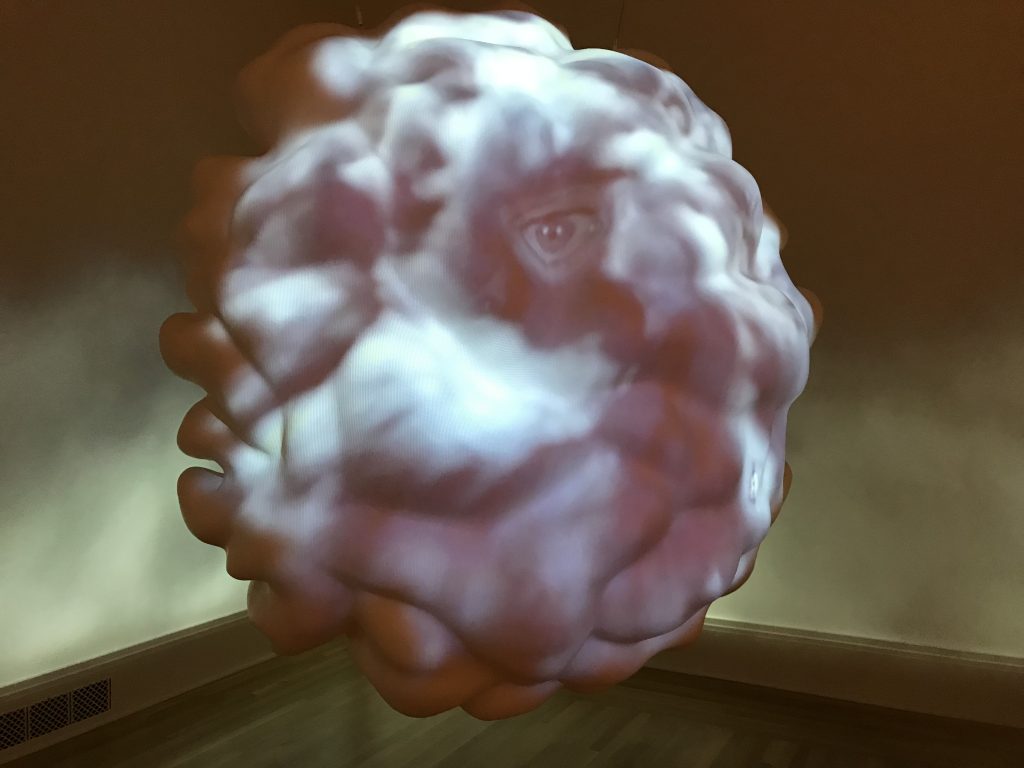
Museum Director Adam Levine said the exhibit continues the museum’s mission to diversify both the artists whose work it exhibits and the media they use to express their visions. It is a blend, Levine said, “of scholarly rigor with a populist bent.”
“This exhibition is about that which is beyond the scope of normal human understanding , the scope of the laws of nature,” he said.
And there’s nothing more human than the enduring fascination, to the point of obsession even, with such phenomena.

